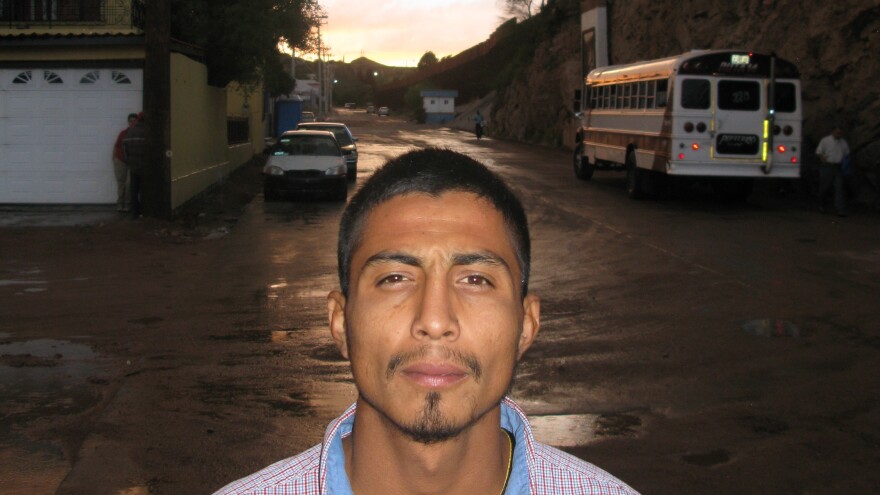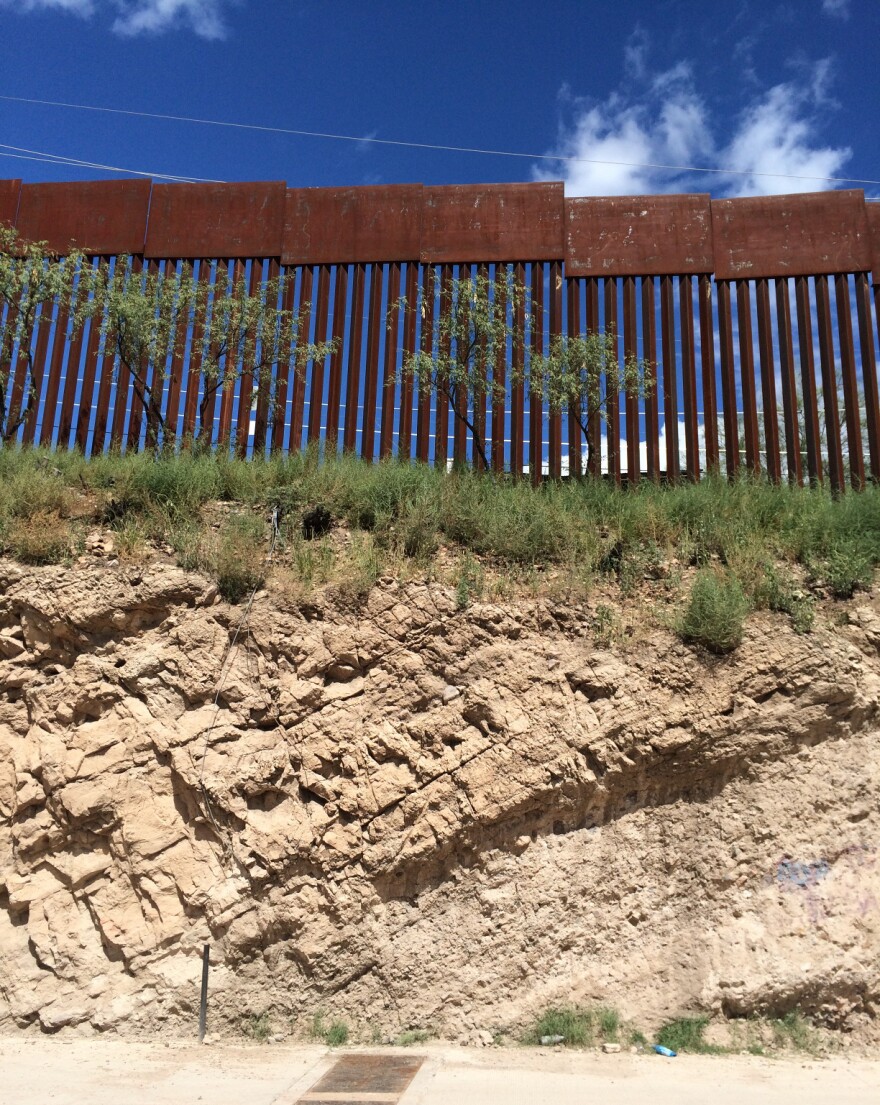
On Friday, in a federal courtroom in Tucson, Ariz., an agent of the U.S. Border Patrol for the first time will be arraigned on charges of murder for shooting and killing a Mexican national across the international border.
On Oct. 10, 2012, Agent Lonnie Ray Swartz, standing behind the border fence in Nogales, Ariz., shot 16-year-old Jose Antonio Elena Rodriguez, who was walking along a sidewalk in Nogales, Sonora. The agent claims he acted in self-defense against rock-throwers on the other side.

If Swartz is convicted of the intentional murder of Elena Rodriguez, he faces up to life in prison.
The Embankment
Standing on International Street in Nogales, Mexico, in the exact spot where the teenager was shot to death, it's a wonder how Swartz could have felt threatened by rock-throwers.
The border fence across the street from where the teenager was shot is built on top of a steep embankment, high above the street where the Mexican rock-throwers allegedly were.
They would have to throw their projectiles 40 to 50 feet up in the air to clear the top of the fence, and the rocks would have to drop straight down to harm an agent standing on the other side. Or they would have to aim their rocks to fly through the 3.5-inch gaps between the iron bars.
Swartz, firing from behind the fence, shot Elena Rodriguez 10 times — eight times in the back, according to the Sonoran state medical examiner.
Diego Roman Elena Rodriguez is here at the spot where his brother died. He's a 22-year-old taxi driver with wispy facial hair and a fierce expression.
"Sure, we are pleased to know that this agent knows what he did," Roman says. "It pleases me that they exposed him, and they're not protecting him just because he's an American. On the contrary, they've indicted him."
Split-Second Decisions
Swartz's fellow agents in the rugged Tucson Sector — where human smugglers, drug smugglers and rock-throwers are common — have come to his defense.
"A lot of us have been involved in rockings; I've been involved in rockings," says Art Del Cueto, president of the Tuscon chapter of the Border Patrol union. "You have individuals, border patrol agents, they have to make split-second, life-and-death decisions. Unfortunately, with social media it's very easy to 'Monday-morning quarterback' somebody."
Saturday will mark three years to the day since Elena Rodriguez was killed. The U.S. attorney's office in Tucson has not said why it took so long to bring charges against the agent.
A source close to the case, who asked not to be named, says he believes the government decided to prosecute because of the alleged use of deadly force involved. If forensics investigators from Sonora state are correct, Swartz emptied his service handgun on the 16-year-old, reloaded, and kept firing.
Witnesses in Mexico say the teenager was just walking down the sidewalk, not throwing rocks. There's a video of the nighttime incident recorded from a security camera, but it hasn't been made public.
The Benefit Of The Doubt
This is one of several controversial cross-border shootings involving Border Patrol agents and Mexicans that have gotten a lot of attention in recent years.
"The indictment is the first time in the history of the country when an agent has been charged with a cross-border shooting. That makes it significant by itself," says Lee Gelernt, deputy director of the ACLU's Immigrants' Rights Project, who is involved in a parallel civil lawsuit in which the mother of the teenager is suing the agent.
Swartz claims immunity from litigation because the U.S. Constitution does not apply in Mexico, but a federal judge in Arizona ruled that it can go forward. That decision is on appeal.
Convictions of federal agents are rare outside of corruption cases.
Johnny Sutton, a former U.S. attorney for the Western District of Texas, is one of the few prosecutors who has sent two Border Patrol agents to prison. They were convicted in 2006 of shooting a Mexican drug dealer and covering up evidence. After a sustained outcry from critics who believed the pair did nothing wrong, the agents later had their sentences commuted by President George W. Bush.
"It's really hard to prosecute border agents, because their job is extremely hard," Sutton says. "We've asked them to do extremely difficult things in extremely difficult locations, and people give them the benefit of the doubt — including juries."
Copyright 2020 NPR. To see more, visit https://www.npr.org. 9(MDAwMTM1NDgzMDEyMzg2MDcwMzJjODJiYQ004))




